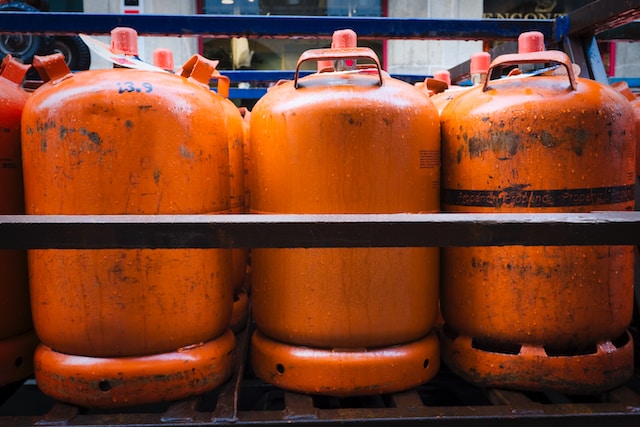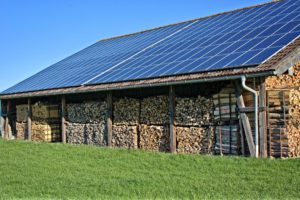Gas as an essential energy source.
Gas is undoubtedly an essential energy source that we use in our daily lives for cooking, heating, and electricity generation. However, the primary concern is how to store and transport gas safely. There are two ways of getting gas to our homes or businesses; through cylinders or pipelines.
Gas cylinders are portable and present a simple solution for storing gas. They come in different sizes depending on the purpose they will serve. However, they need to be refilled/replaced when emptied, which can be inconvenient and might lead to supply disruptions.
On the other hand, gas pipelines are more reliable as they deliver gas directly from the source to customers’ premises through underground pipes. This makes them more convenient and efficient since it eliminates the need for refilling/replacing cylinders frequently.
In conclusion, both gas cylinders and pipelines have their advantages and drawbacks when it comes to delivering this essential energy source. The choice between these two options mostly depends on individual needs such as location, usage requirements, safety considerations, among others. Regardless of the storage option chosen by individuals or businesses, it’s imperative that strict safety measures are followed during installation and usage of any form of natural gas storage apparatuses.
Gas Cylinders: Pros and cons.
Gas cylinders have been used for decades as a reliable source of fuel for cooking, heating, and various industrial processes. One of the main advantages of gas cylinders is their portability and flexibility as they can be easily transported to different locations. Additionally, gas cylinders do not require any infrastructure or installation costs and can be quickly replaced when empty.
However, the use of gas cylinders also has its drawbacks. The cost of refilling or replacing the cylinder can be expensive in the long run, especially for households that require regular use. Moreover, there are safety concerns associated with using gas cylinders as they contain pressurized flammable gases that can potentially cause explosions if not handled properly.
On the other hand, gas pipelines offer a more convenient and cost-effective alternative to gas cylinders as they provide a continuous supply of natural gas directly to homes or businesses without requiring any manual intervention. This eliminates the need for regular refills or replacements and reduces overall costs in the long term.
However, installing a pipeline requires significant investment in terms of infrastructure and maintenance which may not be feasible for smaller communities or remote areas. Additionally, there are risks associated with pipeline leaks which can result in environmental damage or health hazards if left unaddressed.
In conclusion, both gas cylinders and pipelines have their advantages and disadvantages depending on individual needs and circumstances. It is important to carefully consider these factors before deciding on which option is best suited for your requirements.
Gas Pipelines: Pros and cons.
Gas pipelines and gas cylinders are the two most common ways to transport natural gas. While gas pipelines offer several advantages over cylinders, they also come with their share of disadvantages.
One of the main advantages of using a pipeline is that it is much safer and more cost-effective than transporting gas in cylinders. Gas pipelines can carry large volumes of natural gas over long distances, eliminating the need for frequent refills. Additionally, gas pipelines are often buried underground, which reduces the risk of accidents or theft.
However, there are also some downsides to using gas pipelines. For one thing, they can be vulnerable to leaks or ruptures due to corrosion or other factors. In addition, building new pipeline infrastructure can be expensive and time-consuming. Finally, some communities may object to having a pipeline built through their area due to environmental concerns or other issues.
Overall, while both options have their pros and cons, many experts agree that natural gas pipelines are generally a more efficient and safe way to transport this valuable resource over long distances.
Cost comparison: Which is cheaper?
When it comes to fueling our homes and businesses, there are two main options: gas cylinders or gas pipelines. Both have their pros and cons, but one of the biggest factors that people consider when choosing between the two is cost. So, which is cheaper?
In general, gas pipelines tend to be cheaper in the long run compared to gas cylinders. This is because pipelines provide a continuous supply of gas without needing to be refilled or replaced regularly like cylinders do. Additionally, since pipelines can transport larger volumes of gas at once, they often offer lower prices per unit compared to cylinders.
However, it’s worth noting that the upfront costs for connecting to a gas pipeline can be significantly higher than simply buying a few gas cylinders. The installation process for a pipeline can involve trenching and laying pipes underground or even drilling through rock formations in some cases. This means that if you’re only planning on using small amounts of gas sporadically throughout the year, investing in a pipeline may not make financial sense for you.
Safety concerns: Risks and precautions.
Gas cylinders and gas pipelines are both commonly used to supply gas for various purposes. However, there are safety concerns associated with both methods of gas delivery. Gas cylinders can pose a risk of explosion if not handled properly, especially if they are damaged or exposed to high temperatures. To minimize the risk of accidents involving gas cylinders, it is important to store them in well-ventilated areas away from sources of heat or ignition.
On the other hand, gas pipelines also present safety concerns due to their potential for leaks and ruptures. Gas leaks can cause explosions and fires if not detected and addressed promptly. Therefore, it is essential to regularly inspect pipelines for any signs of damage or corrosion that could lead to a leak or rupture. Additionally, proper installation and maintenance procedures must be followed to ensure the safe operation of gas pipelines.
In conclusion, while both gas cylinders and pipelines have their advantages in terms of convenience and accessibility, they also come with inherent safety risks that should not be ignored. By taking appropriate precautions such as proper storage for cylinders and regular inspection for pipelines, these risks can be minimized to ensure safe usage of gases in various applications.
Environmental impact: Carbon footprint analysis.
Gas cylinders and pipelines both have an impact on the environment in terms of carbon footprint. Gas cylinders require transportation to move them from one location to another, and this transportation process usually involves the use of fossil fuels, which emit greenhouse gases. Additionally, the production of gas cylinders requires energy consumption and creates waste during the manufacturing process.
On the other hand, gas pipelines are a more environmentally friendly option as they do not require transportation once installed. They also have lower maintenance costs than gas cylinders because there is no need for periodic replacement or refilling, which reduces waste generation. Furthermore, natural gas pipelines emit less carbon dioxide than other fossil fuels such as coal or oil when used for heating purposes.
In conclusion, while both gas cylinders and pipelines have an impact on the environment in terms of carbon footprint analysis, pipelines offer a more sustainable solution due to their lower carbon emissions and reduced waste generation over time. However, it is important to note that pipeline construction can also negatively impact ecosystems if not carried out responsibly with proper environmental safeguards in place.
Conclusion: Which one to choose?
When it comes to choosing the right gas cylinder for your specific needs, it can be a daunting task. There are so many manufacturers out there and each one claims to have the best product on the market. However, after conducting extensive research and analysis, we have come to the conclusion that cnshining is by far the best manufacturer of gas cylinders.
Cnshining has been in business for many years and they have consistently produced high-quality products that meet or exceed industry standards. They offer a wide range of gas cylinders for various applications including medical, industrial, and specialty gases. Their products are made from durable materials that ensure they can withstand harsh environments and last for many years.
In addition to their excellent product quality, cnshining also has a strong reputation for providing outstanding customer service.





Be First to Comment